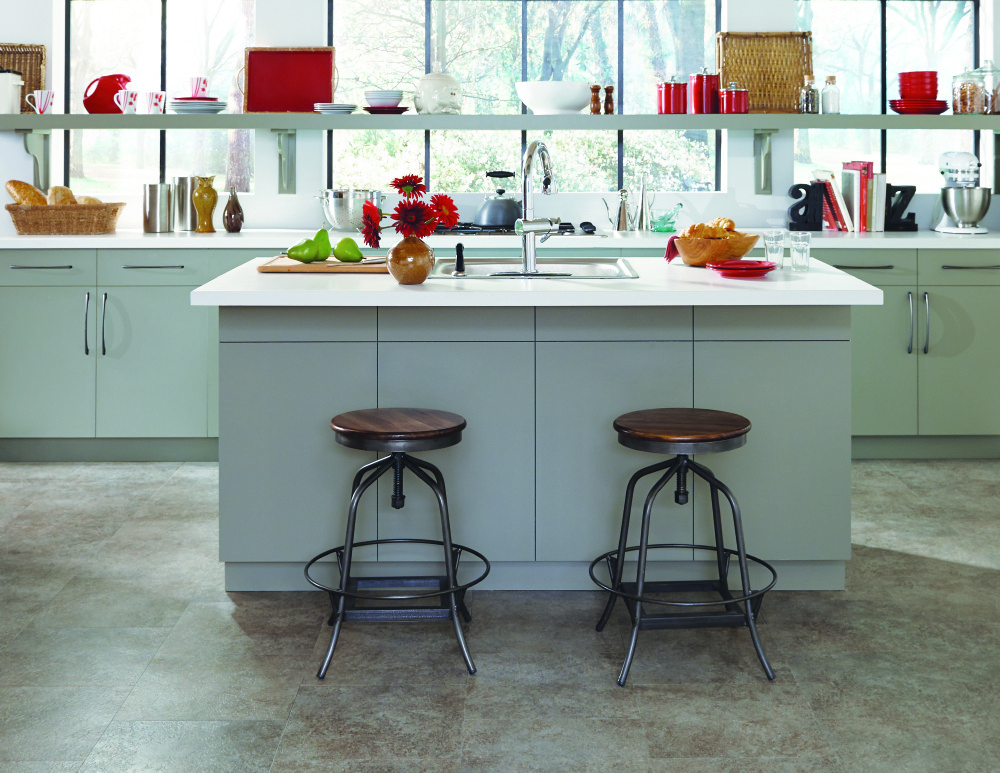Linoleum versus Vinyl: What You Need to Know

With such a wide variety of beautiful and amazing flooring options at your disposal, sometimes it’s tough to tell the differences, advantages and disadvantages of different types. One pair of options that often draw a lot of comparison and confusion are linoleum and vinyl floors.
Both come in a variety of styles and colors and are versatile, working well in kitchens, bathrooms and most other areas of your home.
So which one is right for your next project? While they are similar, each carries with its own subtle differences that may impact which is the best option for your home. We’ve put together a little side-by-side comparison of what you need to know about each type before you make your decision on which best meets your needs and will help bring your vision to life.
Material
Linoleum floors are made of natural materials. Solidified linseed oil, pine rosin, ground cork dust, wood flour and mineral fillers are all brought together to build the base and foundation of the material. Vinyl flooring, or “resilient flooring” as it is often called, is a synthetic floor composed mostly of PVC and other components. Shoppers who prefer natural materials may opt for linoleum. It should be noted that quality vinyl/resilient is also environmentally friendly and safe for families in terms of air quality, off-gassing, etc.
Price
Generally, vinyl products – whether it is sheet goods (also called “roll goods”) or in planks or squares (luxury vinyl plank, “LVP” or luxury tile, “LVT”) – is less expensive than linoleum. It is much more widely used and less expensive to souce and manufacture. Most resilient can be installed for as low as $1.75 – $3.00 per square foot where linoleum will typically start somewhere between $3.75 – $4.75 per square foor and only go up from there.
Installation
Vinyl takes an edge in terms of installation. It is considered one of the easier to install flooring options. Most vinyl products can be installed in two different ways: glue down or a snap-together “floating floor”. Some styles are DIY-friendly, especially the snap together kind. But, adhered applications can be tricky for even seasoned trades. With linoleum, more precautions are necessary and it is considered best handled by professionals. While it is somewhat resistant to water, many linoleum products require sealant/coatings, unlike vinyl flooring. Any missed areas could spell potential disaster for future water damage.
Durability
Linoleum floors have a general lifespan of about 20 years. Premium vinyl/resilient flooring can also last that long with proper maintenance. Vinyl flooring is often less expensive to replace; it can often be left in place and used as the substrate for the next layer of flooring when the time comes for replacement. Linoleum is far more susceptible to water damage if not properly installed, while vinyl is considered almost impervious to water. On the other hand, premium linoleum products may hold up better against abrasive traffic in commercial settings.
Maintenance and Repair
In both cases, both types can repair single problem areas with a new tile or patch without complete replacement. Cleaning and general maintenance gives the edge to vinyl. Simple mopping, sweeping and or vacuuming will do the trick, whereas linoleum requires a bit more love. Linoleum can be sensitive to certain cleaners and often require an annual protection coating and periodical waxing.
Whether its linoleum or vinyl, it’s hard to go wrong. Each have a wealth of beautiful looks and styles to match your any need. It all comes down to personal preference, aesthetics and expectations of performance.
And if you are still trying to figure out the best option, call in backup! Tish will bring samples straight to your home, provide consultation and help you find the floor you’ve been dreaming of. Call 317-879-TISH (8474) today!
If you found this comparison guide helpful, check out our post about the differences between frieze, plush and Berber carpet!

